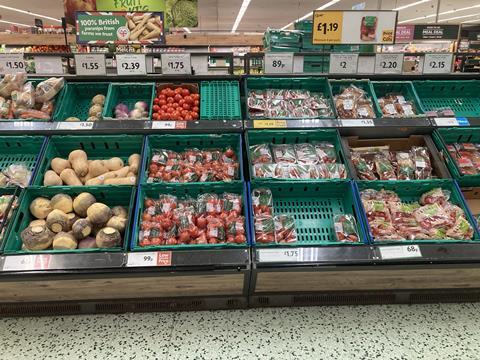Inflation eases in October as grocers’ year-on-year sales increase and spending on deals rises considerably

Grocery price inflation slowed to 4.7 per cent in October as retailers ramped up promotions ahead of Christmas, according to the latest figures from Worldpanel by Numerator.
Take-home sales at the grocers grew by 3.2 per cent year on year in the four weeks to 2 November, with spending on deals climbing by 9.4 per cent. By comparison, spending on full-priced goods rose by just 1.8 per cent.
Fraser McKevitt, head of retail and consumer insight at Worldpanel, said: “Christmas ads are hitting our screens and the race to the big day is on in the supermarket sector. Retailers are very alive to the financial struggles that some households are facing, not least ahead of this year’s Budget.”
The grocers are “eager” to show how they’re offering shoppers value for money, he added, “putting the emphasis on price cuts rather than multibuy offers”.
Almost 30 per cent of consumer bought promoted items in October, a figure Worldpanel expects to increase further as we get closer to Christmas.
Alongside the emphasis on promotions, Worldpanel is predicting a new sales record for retailers’ premium lines this year with potential for premium line exceed £1 billion in December.
McKevitt explained: “It’s important to remember that shoppers often look for great value and quality, not just the cheapest product. At Christmas especially, people want to treat themselves, and throughout the cost-of-living crisis we’ve seen them turning to retailers’ premium own-label lines to do that in a way that’s more affordable.
“Sales of these goods were worth £582 million in the latest month, and they are likely to double as Christmas edges nearer, topping £1 billion in the month of December for the first time ever.”
Black Friday week in late November could provide a significant sales boost for the grocers, particularly online. During this period last year, Amazon remained the destination retailer for general merchandise, while Tesco and Asda took second and third spot respectively in the battle for spend.
Online remains the fastest-growing part of the grocery market and spending on home delivery rose by 11 per cent in October, with every retailer that offers the service boosting sales.
McKevitt said: “Online growth is primarily being driven by the already converted as existing shoppers continue to value the convenience of the format and make more orders.
“On average, households who use online grocery now buy three shops a month, making up a whopping 61 per cent of their spending at the grocers.”
Benefiting from the popularity of online orders, Ocado posted a new record share for the 12 weeks to 2 November, hitting 2.1 per cent. It remained the fastest-growing grocer for the third month in a row. At 15.9 per cent, Ocado registered its highest rate of sales growth in over four years since April 2021.
Meanwhile, Tesco and Lidl both added half a percentage point of share to their market positions. Maintaining a run of double-digit growth from April, Lidl boosted sales by 10.8 per cent over the 12 weeks to take its share to 8.2 per cent.
Tesco now accounts for 28.2 per cent of the market as spending at Britain’s biggest grocer climbed by 5.9 per cent, while sales growth of 5.2 per cent took Sainsbury’s market share to 15.7%.
With 10.6 per cent of the market, Aldi also won share and grew sales by 4.4 per cent.



